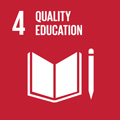- Docente: Meri Raggi
- Credits: 10
- SSD: SECS-S/01
- Language: Italian
- Moduli: Meri Raggi (Modulo 1) Meri Raggi (Modulo 2)
- Teaching Mode: In-person learning (entirely or partially) (Modulo 1); In-person learning (entirely or partially) (Modulo 2)
- Campus: Bologna
- Corso: First cycle degree programme (L) in Business Administration (cod. 8871)
-
from Nov 10, 2025 to Apr 30, 2026
-
from Apr 13, 2026 to Apr 23, 2026
Course contents
MODULE 1: Statistical variables. Population and sample. Collecting and organizing data. Data set and frequency distributions. Graphic representations. Mean values, mode, median and quantiles. Eterogeneity, variability and inequality measures. Shape: asimmetry and curtosis. Bivariate statistical analysis. Relationships between variables: statistical dependence, covariance and linear correlation. Simple linear regression. Introduction to sampling and statistical inference. Bayesian theorem. Random variables and probability distributions. Sampling. Point and interval estimation. Hypothesis testing. Linear regression models.
MODULE 2: Introduction to R. Basics of the R language and its syntax, as well as basic objects and their structure.
Integrating R code, importing data, visualising and cleaning data.
Statistical analysis with R. Application of statistical methods seen in module 1 on real data (both descriptive and inferential methods):
Frequency tables and descriptive statistics,
Graphical representations,
Theoretical and empirical exploration of the main probabilistic distributions,
Association and linear regression model.
Software used can be downloaded free of charge at the following link: https://posit.co/download/rstudio-desktop/
Readings/Bibliography
Student could chose a book in statistics. Some example are:
Module 1:
Borra S., Di Ciaccio A. (2020). Statistica, metodologie per le scienze economiche e sociali, McGraw-Hill.
Levine D.M., Szabat K., Stephan D.F. (2018). Statistica, Pearson.
Piccolo D. (2010.) Statistica, Il Mulino.
Sullivan M., Zavarrone E. (2015). Fondamenti di statistica, Pearson.
Module 2:
Wickham, H., & Grolemund, G. (2016). R for data science: Import, tidy, transform, visualize, and model data (1st ed.). O’Reilly. Available at https://r4ds.had.co.nz [https://r4ds.had.co.nz/]
Hanck, C., Arnold, M., Gerber, A., & Schmelzer, M. (2021). Introduction to Econometrics with R. Universität Duisburg-Essen. Available at: https://www.econometrics-with-r.org/
Additional teaching material will be available at e-learning Platform VIRTUALE
Teaching methods
Lessons and exercises in class
Use of the VIRTUAL e-learning platform [https://virtuale.unibo.it/course/view.php?id=15904] to evaluate your preparation.
Assessment methods
The Statistics (Total) Exam consists of two tests: a written test and an oral test.
For the total course mark, the part relating to the first module will weigh 80% while that relating to the second module will account for 20%.
Module 1:
The written examination relates to Module 1 and includes three to four exercises that include practical and theoretical questions.
During the test, a formulary will be handed out, which is the only material that can be consulted. Other types of notes are not allowed. The use of a calculator is allowed. The maximum time allowed for the test is 1 hour and 30 minutes. The examination will be failed if a mark below 16/30.
The oral examination for Module 1 is mandatory within the same examination session for students who have achieved a passing grade lower than 20/30 in the written test. The oral component covers all topics included in the syllabus and is intended to further assess the student’s understanding of theoretical concepts. The score range for the oral exam is –3 to +3 points, which will be added to the written exam grade.
Module 2:
The assessment for Module 2 consists of an oral examination, during which students will be required to execute a number of R commands using a computer. The oral examination may be taken only after achieving a passing grade in the written examination of Module 1.
The oral examinations for both Module 1 and Module 2 must be taken during the same examination session as the written examination.
For Module 1, students may choose to take two mid-term assessments (held in December and March) or a total final examination.
Teaching tools
Elearning with VIRTUALE platform
Office hours
See the website of Meri Raggi
SDGs


This teaching activity contributes to the achievement of the Sustainable Development Goals of the UN 2030 Agenda.
